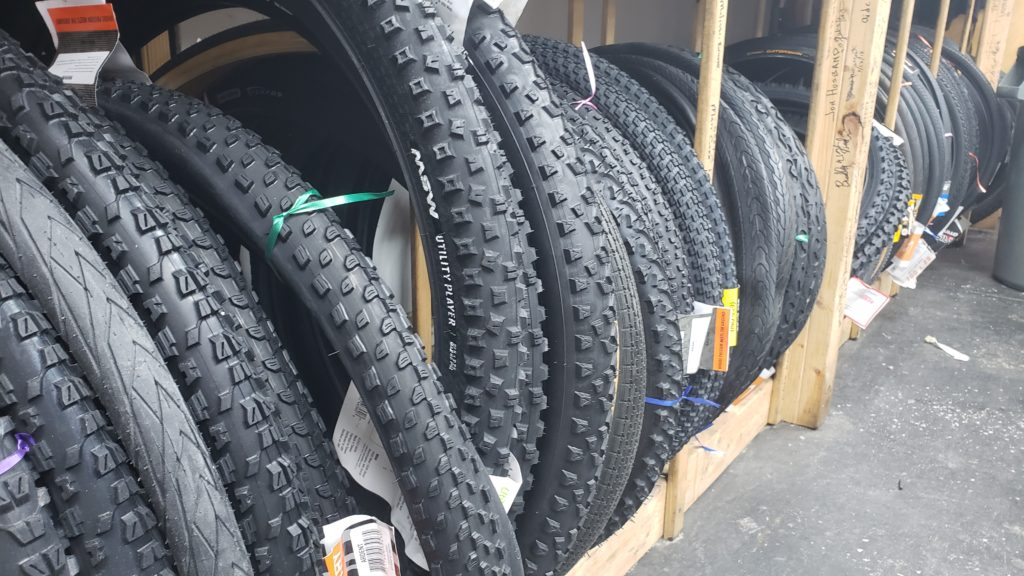
The most common component on a bicycle that we replace here in the shop are inner tubes. Far and away, we replace probably 10 times more tubes than any other single item. Of course, tubes are usually easy to determine if they are bad: if you try to inflate and it won’t, then it needs to be patched or replaced. The next most common item on a bike that we replace are the tires.
We get a lot of questions about tires. How long do they last? How many miles should I expect from my tires? How do I tell if my tires are worn out? Today I will answer these questions so that you will be able to get the most out of your riding.
As for how long tires last or how many miles one can expect from their tires, there are numerous variables. However, there are things you can do to prolong the life of your tires. The rider’s size, strength, and riding conditions can affect how long a tire will last. Also, where the bike is stored will make a big difference. Finally, whether it is a front or rear makes a huge difference. In general, a front tire lasts 2-3 times as long as a rear tire. Many people like to rotate tires occasionally to try to prolong the life of the tires. Personally, I don’t find that as helpful; plus, I never like to put a more worn tire on the front than on the rear. Front grip is more critical than rear grip. If your rear tire slides, you can usually ride it out no problem; if your front tire slides, you often go down. What I recommend is when the rear tire wears out, either just replace it, or move the front to the rear and put the new tire on the front. Personally, I get about 3,000 miles out of my rear road tires, and about 600-1,000 out of my rear mountain bike tires. I’m a fairly strong rider, but lightweight, so I don’t tend to wear them quickly. For me, that usually means new road tires once a year, and new mountain bike tires every two years. I do usually use race tires; non-race tires often last longer as they will have more rubber. If you are larger and stronger, you can expect fewer miles out of your tires. If you ride really rough roads, your road tires may not last as long. Storage makes a huge difference. Storing your bike inside a climate-controlled environment will greatly extend the life of the tires. I have seen tires worn out in just a few months when the bike has been stored out in the sun and elements.
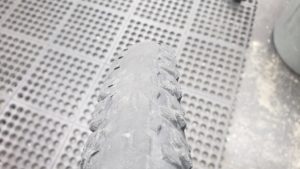
Worn Mountain bike tire
So how does one tell if his tire is worn out? Mountain bike tires, or tires with a lot of tread are generally pretty easy to tell. When the knobs are gone, it’s definitely worn out. But, honestly, the tire probably should be replaced well before the tread is completely gone. Performance will go down long before. Many mountain bike tires have small grooves in the tread, called siping. When the siping is nearly gone, you’ll notice the tire just doesn’t grip as well as it did when
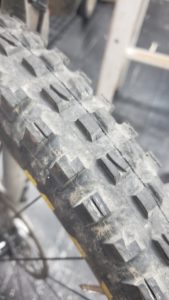
Tire with Siping.
new, and you should go ahead and replace it if performance is important. Now, if there is still tread, even with the siping worn out, you can still ride it until the tread is completely gone without fear of a blowout, so if you are in a tight spot financially, you know you still have some time.
But what about road bike tires? They often have very little tread, if any at all. How do you tell if they are worn out? Some tires, like the Continental tires pictured below have wear indicators. When they indicators are gone, it’s time to replace the tire. Below is a picture of wear indicators that show a front tire with some life left and a rear that should be replaced. But even without the wear indicators, you have a visual indicator of the tire’s wear. If you look at the top of a new tire from in front or behind, you will see that the tire is round. When the tire is worn, it becomes flatter across the top. When it is flat across, it is time to replace the tire.
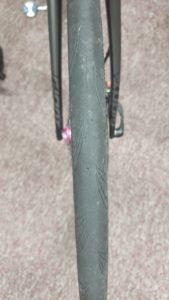
Wear indicators both easily seen (small circles both easily seen)
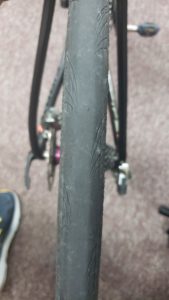
Wear indicator mostly gone (small circle barely visible, second not visible)
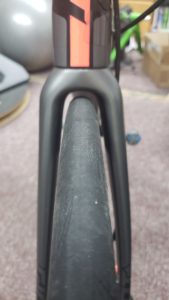
Front tire still has life, still round across the top
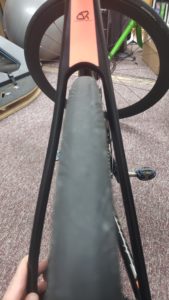
Worn rear tire, flat across the top
Lastly, tires can be worn out even if they have plenty of tread, siping, and are round across the top. How? They could be suffering from dry rot or have worn sidewalls that are ready to blow out. This often happens if tires are left out in the sun, but also just from age. If you only ride the bike once or twice a year, your tread may last for a very long time, but the tire could still dry out. The picture below shows an old tire with a very dried out sidewall.
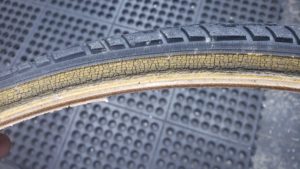
Tire with dried out sidewall
If there are just a couple small cracks around the tire, you can get away with riding it a bit longer. However, if there is significant cracking, it would be safest to just replace the tire before you have an issue. As you can see, the tread is still pretty deep on this tire, but the sidewalls are completely dried and cracked.
Hopefully, this answers questions you may have about tires and their longevity. As always, if you have questions or need help, just stop on in to see us!
![]()

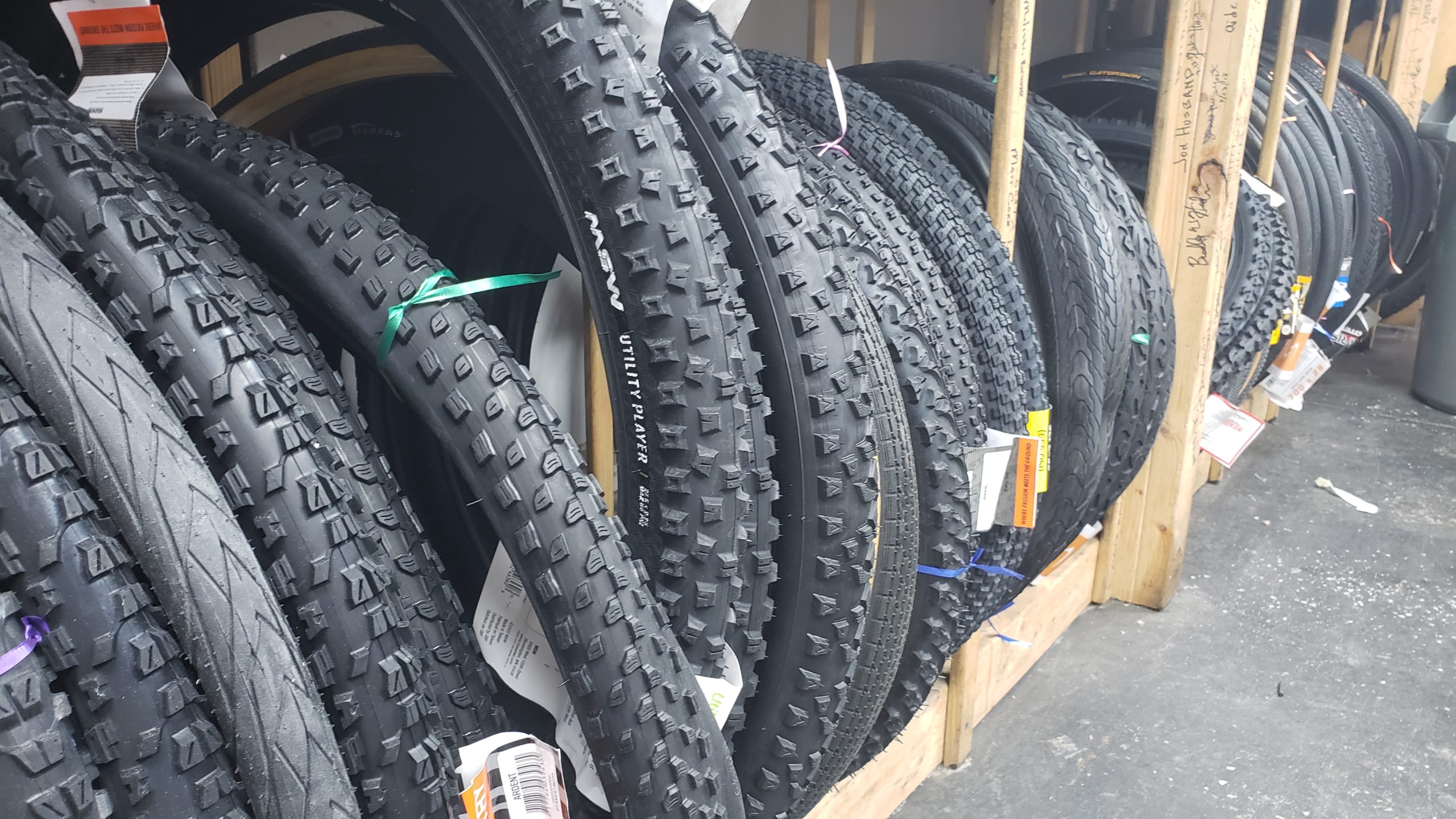
Comments are closed